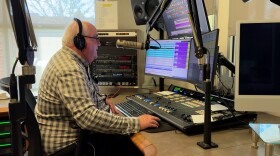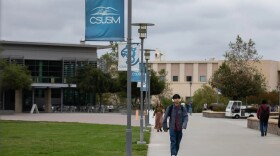Prescription drug abuse has become a major problem in the U.S. County health officials say San Diego is no exception. An increasing number of local deaths have been caused by unintentional overdoses of prescription drugs.
Dr. Jonathan Lucas is the County's deputy medical examiner. He said drug-related deaths have increased by 85 percent over the past ten years.
"Alcohol and medication-related deaths have actually surpassed motor vehicle fatalities, and have become the number one cause of non-natural deaths in the county," Lucas said.
Heart disease is the leading cause of death overall. But prescription drug abuse runs a close second. Lucas said more than 400 San Diegans died from an unintentional prescription drug overdose last year.
"The numbers, given a population of 3.2 million people, may not seem like a real big number, but you're still talking about 400 people dying," Lucas pointed out. "That's four times the number of homicides we see every year in this county."
The drugs linked to these deaths read like a laundry list of narcotics: Oxycontin, Vicodin, fentanyl, morphine.
Lucas said the number of fatalities doesn't tell the whole story.
"We're only seeing the population that dies, and for every single death, how many others are out in the community, that are doing the same thing, but just haven't passed away?"
The answer to that question may lie in a hospital emergency room. The Centers for Disease Control says between 2004 and 2008, ER visits for prescription drug use more than doubled.
Inside the ER at UCSD Medical Center in Hillcrest, Dr. Richard Clark sees a lot of people who've gone overboard.
"We've had problems with adults for a long time," said Clark. "And now, we're seeing a lot of drugs get abused by adolescents and college students."
Clark thinks the big jump in prescription drug abuse began in the early 90s. That's when the Joint Commission, the agency that regulates hospitals, directed providers to better diagnose and treat chronic pain.
Drug makers responded by churning out more pain killers. And Clark said doctors are writing too many prescriptions for them.
"And in our well-meaning intentions, of relieving pain in patients, which we're very capable of doing, we have caused more addiction potential, and more quantities of the drug to be in society now, that can get into the wrong hands and be abused," Clark said.
A recent government study finds between 1998 and 2008, the number of people treated for prescription drug addiction rose by 400 percent.
Psychiatrist Michael Plopper is the chief medical officer for Sharp Behavioral Health Services.
Dr. Plopper described one of his typical patients.
"So often," he said, "we'll have someone who we've seen who starts with a Vicodin prescription after a tooth extraction. And then, there may be a refill on that. And that may be put in the medicine chest."
Plopper says long after the pain is gone, the person continues to take Vicodin or other pain killer.
" These medicines make people feel good. And after time, people develop tolerance," he warned. "It requires larger and larger doses to achieve the same benefit. And that's not only for treatment of pain, but also for that euphoria that's associated with opioid dependency."
Law enforcement agencies are urging people to dump their unused prescriptions. The county sheriff's department has set up permanent drug collection boxes. Officials say a recent prescription drug take back day collected more than two tons of medications in San Diego, and some 121 tons nationwide.
But a lot more action is needed. Federal officials say in 2008, at least six million Americans abused prescription drugs.






